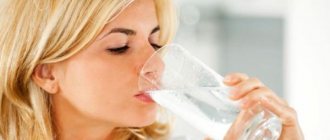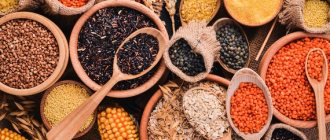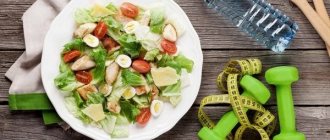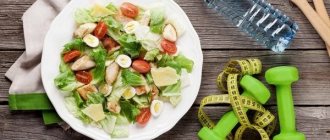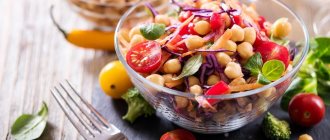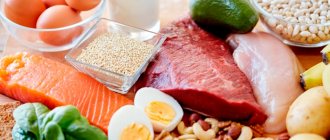What is an iodine-free diet?
Iodine is an essential mineral that plays different roles in the body.
Your thyroid gland uses it to produce thyroid hormones, which help with many important processes. These include regulating metabolism and aiding in tissue growth and repair (1).
Iodine is present in many foods, such as dairy products, seafood, grains and eggs.
Although iodine is important, it may need to be limited in some cases.
The iodine-free diet is a short-term diet that can be prescribed to people before radioactive iodine therapy for diseases such as papillary or follicular thyroid cancer (2).
As part of this diet, people should limit their daily iodine intake to less than 50 mcg of iodine per day, which is one third of the daily value of 150 mcg (3).
This short-term diet lasts approximately 1–2 weeks before taking radioactive iodine and continues for another 1–2 days afterward. However, these recommendations may vary and depend on the professional opinion of your doctor (3).
The goal of a low-iodine diet is to deplete your body's iodine stores, which helps make scans or radioactive iodine treatments more effective (3).
Summary:
The iodine-free diet is a short-term diet that is usually prescribed to people with thyroid cancer before starting radioactive iodine therapy. Its goal is to improve the effectiveness of treatment.
Foods with medium content I
The list of products with an average concentration of iodine per 100 g - from 5 to 25 mcg - is presented in the table:
| Who are the products recommended for? | Grocery list |
| The products are indicated for use in order to correct the increased concentration of iodine in the body. |
|
Benefits and precautions
The main purpose of the iodine-free diet is to improve radioactive iodine therapy.
However, this diet can benefit your health in several other ways.
May lower blood pressure
As a side effect, a diet low in iodine may help lower blood pressure.
This is because the diet limits many unhealthy food groups, such as processed meats and highly processed snacks. These specific food groups are limited because they often contain a lot of iodized salt.
Numerous studies have shown that a diet high in processed foods is associated with an increased risk of high blood pressure. Additionally, reducing processed food intake in favor of whole foods has been associated with lower blood pressure (4, 5, 6, 7).
However, it is important to note that the iodine-free diet is temporary. Thus, to achieve lasting changes in blood pressure, you must minimize your intake of processed food in the long term.
May improve the quality of your diet
Additionally, an iodine-free diet can help improve the quality of your diet.
This is because many unhealthy foods contain a lot of iodized salt.
This mainly applies to fast food, frozen dinners and packaged foods such as chips, which typically contain not only iodized salt, but also unhealthy fats and calories.
Since these foods are prohibited in this diet, it may improve the overall quality of your diet.
However, although a low-iodine diet temporarily eliminates these foods, if you are committed to improving your lifestyle, you will need to continue to make healthier food choices.
Precautions and Concerns
Although the iodine-free diet has its potential beneficial effects on the human body, it is not suitable for everyone.
A low-iodine diet is a short-term diet for people who will be undergoing radioactive iodine therapy. As a short-term diet, it should only be followed 1-2 weeks before therapy and a few days after, as recommended by your healthcare professional.
Due to its restrictive nature, a low-iodine diet should not be followed for longer than the recommended period of time as it limits some nutrients. If you follow this diet longer than expected, it may increase your risk of nutritional deficiencies.
If you don't need radioactive iodine therapy and want to try the iodine-free diet for other purposes, you can try other healthy diets.
Summary:
An iodine-free diet can benefit your health in several ways, such as improving your blood pressure and the quality of your diet. However, this is a short-term diet, and to achieve long-term changes, you must maintain healthy eating habits after completing the diet.
The effect of iodine on the thyroid gland, the relationship
In the 19th century, scientists discovered that patients with a removed thyroid gland developed cretinism. But then doctors could not even imagine that iodine is closely related to this organ and affects many processes in the body. Only after some time it was discovered in the thyroid gland, then scientists came to the conclusion that without this element it cannot fully function.
This is due to the fact that the hormones synthesized by the gland consist of more than half of iodine. They, in turn, are involved in the functioning of the brain, metabolism and other systems, so if there is a lack of iodine in the body, serious health problems arise.
Since iodine activates the functioning of the thyroid follicles, its deficiency leads to the fact that the function of this organ weakens over time. It is important that the body receives the amount of the substance it needs every day.
Eating only foods that do not contain iodine leads to the development of serious diseases
However, an excess of this microelement negatively affects both the thyroid gland itself and the entire body as a whole. This can lead to the onset of inflammatory processes in internal organs, eye diseases and hepatitis.
Endocrine disorders most often affect women during pregnancy. At this time, they develop gestational hypothyroidism, which is why the consulting gynecologist prescribes taking “Iodomarin” or other similar complex-action drugs for the full development of the child and the health of the mother.
Regular consumption of iodine during pregnancy prevents mental and physical abnormalities in the newborn.
What foods can you eat?
Although a low iodine diet is restrictive, it allows for many healthy food options.
Here is a list of foods you can eat on an iodine-free diet (8):
- Fruit : everything except rhubarb and cocktail cherries
- Vegetables : all raw or frozen (except frozen peas) – no salt
- Meat : all fresh meat, up to 170 grams per day – meat contains some iodine, so excessive consumption is not recommended
- Eggs : egg whites only
- Cereals and cereals : rolled oats (except packaged oats or instant oats), rice, quinoa, couscous, corn grits, bulgur, buckwheat, whole wheat pasta or other salt-free pasta
- Crackers : unsalted matzo crackers, unsalted rice cakes, unsalted rice crackers
- Nuts : all nuts, only unsalted
- Baking : Unsalted bread, homemade bread or homemade baked goods – baked goods without iodized salt, eggs or butter (use vegetable oil instead)
- Spreads : unsalted butter, jams, jellies, honey
- Oils : all vegetable oils, including soybean
- Drinks : brewed coffee and tea, water, fruit juices
- Herbs and Spices : All fresh or dried herbs and spices, non-iodized salt
In addition, daily consumption of permitted meat should be limited to 170 grams, since meat naturally contains iodine.
If you're not sure whether a low-iodine product can be used, you can check its ingredient list to see if it contains salt. Iodine is not typically found in most of these foods, so if salt is added, it is most likely iodized salt.
Summary:
An iodine-free diet allows you to eat many healthy food groups, including all fresh vegetables, fresh meats (excluding seafood), grains and grains, homemade breads and pastries, and all fresh herbs and spices.
Foods low in I
Such products (iodine concentration up to 5 mcg per 100 g) should not form the bulk of a person’s normal diet; they should be consumed as part of a diet to correct iodine concentration in the body.
The list of products is presented in the table:
| Who are the products recommended for? | List of products |
| The products are indicated for people with hyperthyroidism and before undergoing a thyroid function test. |
|
What foods should you avoid?
Many people may find the restrictive nature of the low iodine diet challenging.
She temporarily eliminates many food groups, as many foods contain iodine or enhance its absorption, such as soy-based foods.
Here is a list of foods to avoid on an iodine-free diet (8):
- Seafood : all fish, shellfish, all canned fish, seaweed, all sushi and any food made from fish stock
- All processed or cured meats : including breakfast meats, bacon, sausages, smoked meats, salami, corned beef, canned poultry, etc.
- Organ meats : all organ meats including liver, heart, etc.
- Eggs : whole eggs or egg yolks (egg whites can be used)
- Certain fruits and vegetables : including canned, fresh or dried beans and lentils, frozen peas, instant mashed potatoes, canned bean or lentil soups, kelp, rhubarb and cocktail cherries
- Soy products : including tofu, edamame, soy sauce, soy meat and more
- Dairy products : everything, including dairy products such as yogurt, cheese, milk (more than 30 ml per day), butter, cream, etc.
- Bakery products : including commercial baked goods and home baked goods containing dairy products such as milk and butter
- Desserts and sweets : all dairy sweets such as chocolate, commercial baked goods, pudding and molasses
- Condiments and spreads : including all nut butters (except unsalted varieties), barbecue or hot sauces, Asian sauces such as oyster sauce, fish sauce and soy sauce
- Snacks : including all salted nuts, processed snacks such as chips and pretzels
- Seasonings : including iodized table salt, seasoning blends with iodized salt, alternative salts such as onion salt, sauces containing milk or butter, bouillon cubes, stock and other soup bases, and more
- Some supplements : including vitamin and mineral supplements containing iodine, cough syrups with red dye No. 3, all dietary supplements containing iodine, and herbal supplements
- Beverages : including milk, soy milk, fruit punch, or commercial drinks containing red dye No. 3
- Some additives : All products containing red dye No. 3, carrageenan, agar-agar, algin and alginates
It's worth noting that foods containing red dye #3, such as cocktail cherries, should be limited as this supplement contains iodine.
Also, if you are following a low iodine diet, it is best not to eat out or buy takeaway food, as it is very difficult to determine which eateries use high iodine foods.
Summary:
An iodine-free diet limits the intake of many common foods, such as seafood, processed or cured meats, whole eggs and egg yolks, dairy products, commercial baked goods, and many snack foods, among others.
Iodine content in tomatoes. Iodine consumption standards
It is extremely important to know which foods contain iodine in large quantities and in what volume they need to be eaten to maintain the balance of the microelement. To do this, you need to understand what the daily need for it is in the body. For people they are different and depend on gender, age characteristics and physical condition.
Age standards for iodine intake
The older a person gets, the more iodine he needs.
Below are the average daily values according to WHO recommendations:
- Children under two years old – 50 mcg;
- Children from two to six years old – 90 mcg;
- Children from six to twelve years old - 120 mcg;
- Adolescents from twelve years of age and adults – 150-200 mcg.
It is important to emphasize. Pregnant girls should consume at least 250 mcg of iodine per day with food.
Breast-feeding
Newborns receive iodine in their mother's milk; the concentration of the microelement depends on her diet. Several studies have been conducted and found that the average value is higher than the required norm.
We advise you to consider taking additional iodine supplements if your diet does not include meat, salt, or seaweed.
Signs of iodine deficiency
In order to understand whether you are consuming enough microelements, we will name the main signs indicating a lack of iodine in the body.
Please note if:
- you feel constant fatigue, weakness, get tired quickly;
- you have become more irritable than before;
- you notice that you have begun to remember poorly;
- mental work has become difficult for you;
- began to gain weight faster;
Important! Failure of the menstrual cycle is one of the signs of iodine deficiency.
You can determine whether a sufficient amount of a microelement is contained in the body using a couple of simple tests.
Instructions for carrying them out:
- A cotton swab is dipped in a solution of iodine in alcohol and with its help a mesh is applied to the skin anywhere except the projection of the thyroid gland. The result is monitored within 24 hours. If the mesh is missing, then there is an iodine deficiency, and if it remains, then everything is in order.
- Before going to bed, 3 lines of different thicknesses are drawn on the skin of the forearm using an iodine solution. The result is assessed by the number of disappeared lines. If by morning only the thinnest line has disappeared, then the iodine content in the body is normal. If there are two, then you urgently need to enrich your diet with these elements. Well, if all the lines have disappeared, then there is a serious iodine deficiency and it is worth visiting a doctor, since the cost of delay may be too high.
Weekly menu for an iodine-free diet
Planning a menu for an iodine-free diet can be challenging due to the limited number of options.
To help you get started, here is a sample low-iodine week's menu.
Monday
Breakfast: oatmeal with berries
- oatmeal (not instant)
- 30 grams of fresh berries of your choice
- water depending on the desired consistency of the oatmeal
Lunch: Fried chicken sandwich
- 2 slices homemade or low iodine bread
- 85 grams fried chicken
- fresh vegetables of your choice, such as lettuce, tomatoes, carrots
Dinner: Pasta with fried chicken
- 85 grams fried chicken
- 115 grams whole wheat pasta, cooked
- spinach and bell peppers, cooked
- a little olive oil
Tuesday
Breakfast: egg white omelet with vegetables
- 3 egg whites
- fresh or frozen vegetables of your choice from the permitted list
- a pinch of black pepper and non-iodized salt
Lunch: Grilled chicken salad dressed with olive oil
- 85 grams fried chicken
- fresh salad with spinach, avocado, tomatoes and red onion
- a little olive oil
Dinner: Soft shell tacos
- 85 grams ground beef or other meat
- seasonings of your choice, such as cumin, oregano and garlic powder
- homemade soft taco tortillas (use non-iodized salt)
Wednesday
Breakfast: sandwich with avocado, cucumber and tomato
- 2 slices homemade or low iodine bread
- raw avocado puree, spread
- chopped cucumbers and tomatoes
Lunch: Quinoa salad
- boiled quinoa
- vegetables such as spinach, cucumbers, avocados, tomatoes and onions
- a little olive oil and lemon juice
Dinner: baked lamb with roasted vegetables
- 85 grams baked lamb
- roasted vegetables of your choice such as potatoes, carrots and broccoli
Thursday
Breakfast: oatmeal with berries
- oatmeal (not instant)
- 30 grams of fresh berries of your choice
- water depending on the desired consistency of the oatmeal
Lunch: roll with baked lamb
- 85 grams baked lamb
- 1-2 homemade or low iodine flatbreads
- fresh vegetables of your choice such as lettuce, avocado and tomatoes
Dinner: Fried chicken with steamed vegetables
- 85 grams fried chicken
- steamed vegetables such as potatoes, beans, broccoli and carrots
Friday
Breakfast: egg white omelet with vegetables
- 3 egg whites
- fresh or frozen vegetables of your choice from the permitted list
- a pinch of black pepper and non-iodized salt
Lunch: leftover dinner from Thursday
- 85 grams fried chicken
- steamed vegetables such as potatoes, beans, broccoli and carrots
Dinner: chicken rolls
- 85 grams chicken, cooked any way you like
- 1-2 homemade or low iodine flatbreads
- fresh vegetables of your choice such as lettuce, avocado and tomatoes
Saturday
Breakfast: Scrambled eggs with toast
- 4 egg whites
- 2 slices homemade or low iodine bread
- a pinch of black pepper and non-iodized salt
Lunch: Stuffed Sweet Potatoes
- 1 sweet potato, baked
- up to 85 grams of fried chicken
- handful of spinach
- handful of fresh cranberries
Dinner: Roast beef with roasted vegetables
- 85 grams roast beef
- roasted vegetables of your choice such as potatoes, carrots and broccoli
Sunday
Breakfast: banana-berry smoothie
Lunch: salad with fried beef
- 85 grams roast beef
- fresh salad with spinach, avocado, tomatoes and red onion
- a little olive oil
Dinner: Roasted Pork Tenderloin with Roasted Vegetables
- 85 grams roast pork
- roasted vegetables of your choice such as potatoes, carrots and broccoli
Summary:
The iodine-free diet has many healthy and tasty menu options. The section above provides a sample low iodine menu for 1 week.
Foods that do not contain iodine
Products that do not contain iodine are used to make both dietary and high-calorie dishes.
| Who is the recommended diet for? | List of products |
| The products are indicated for people diagnosed with cancer, thyroid disease and for preparation before undergoing a course of radioiodine therapy. |
|
Foods consumed daily must supply sufficient nutrients and microelements for the functioning of the human body. Most of them are produced in cells and organs, but iodine is not one of them.
It plays an important role, so dishes that do not contain iodine should be consumed only for medicinal purposes, otherwise a lack of this element can lead to serious disturbances in the functioning of the body as a whole.
Article design: Vladimir the Great
Iodine content in bananas. Iodine-Rich Foods: 22 Best Sources
Iodine is a vital microelement for the body and is responsible for the normal functioning of the thyroid gland, which, in turn, regulates growth and metabolism. Iodine deficiency often causes fatigue, high cholesterol, lethargy, depression and even thyroid tumors. Iodine-rich foods will help prevent all of the above. Here are some of them.
contains approximately 60 mcg or 40% of the recommended daily intake of the specified micronutrient. By the way, mashed potatoes are noticeably inferior in this indicator.
Cranberry
This aromatic berry with a pleasant “sourness” is known for its high concentration of vitamins C and K. It is also rich in iodine. Just one slice of cranberry pie will give you your daily requirement of this mineral (up to 400 mcg).
Prunes
Just five pieces will provide your body with the necessary fiber, boron, vitamins A and K. Prunes are also a good source of iodine. One serving (5 pieces) contains 13 mcg or 9% of the daily value of iodine at 120 calories.
Cod
Tender, juicy and simply incomparable. This fish is characterized by a low fat content and a good portion of iodine in its composition. One serving of cod (85 g) contains 99 mcg of iodine or 66% of the daily value.
Lobster
Lobster is rightfully considered the king of seafood, but in addition to pleasant gastronomic experiences, it can replenish your body's iodine deficiency. One 100-gram serving provides up to 100 mcg of iodine, or approximately 2/3 of the daily value.
Shrimps
Almost all seafood is rich in iodine, and shrimp is a great example. In one serving you will find up to 35 mcg of iodine, or slightly less than 1/4 of the norm. Plus, shrimp are loaded with nutritious protein and calcium.
Canned tuna
When it comes to canned tuna, look for canned tuna in oil. They have the maximum amount of iodine: 17 mcg or 11% of the average norm per 85 g of product. Another plus is high doses of protein, vitamin D and iron.
Fish fingers
Fish sticks are an iodine-rich food product. Although, due to their high calorie content, you need to eat them only in small portions. Two fish fingers contain 35 mcg of iodine (23%) and 140 calories.
Dried seaweed
Eating dried seaweed is perhaps the best way to cope with iodine deficiency in the body. One modest package of this seafood weighing 7 g hides as much as 4500 mcg of iodine, which is 3000% of the daily value for an adult. And this is with a meager 18 calories.
Roasted Turkey Breast
One serving of this dietary dish contains approximately the same amount of iodine as shrimp. But turkey contains many other beneficial compounds: B vitamins, phosphorus and potassium.
Milk
Milk is most often thought of when the body needs to replenish calcium and vitamin D. In addition, the drink contains an impressive amount of iodine: 56 mcg or about 37% in one glass.
Boiled eggs
Hard-boiled eggs are a versatile, healthy food that supplies the human body with vitamins A and D, zinc, calcium, antioxidants and, of course, iodine. One such egg contains 12 mcg or slightly less than 10% of the daily value.
Natural yogurt
“Live” yogurt is a leader among healthy breakfast products. It is known for its high doses of calcium and protein, as well as iodine. A standard cup of yogurt can provide 154 mcg or up to 58% of your daily requirement.
Cheddar cheese
Cheddar cheese is another dairy product with a good concentration of iodine (one modest slice contains up to 12 mcg). Like other cheeses, it has a high calorie content, so it is not suitable for dietary nutrition. You can replace it with a slightly less fatty, but no less healthy one.
Iodized salt
Perhaps iodized salt is the easiest way to add additional iodine to your diet (77 mcg per 1 g of fortified table salt). True, modern trends in healthy eating are taking us further and further away from the tradition of salting and adding salt to food. Some are even willing to completely eliminate sodium chloride from their diet.
Himalayan salt
It is distinguished from sea and table salt by its characteristic pink tint. An alternative name is halite. It contains significantly more useful microelements, and is better absorbed by the body. The recommended dosage is 0.5 g per day. At zero calories, this amount will give your body 250 mcg of iodine, or more than 150% of the average daily requirement.
